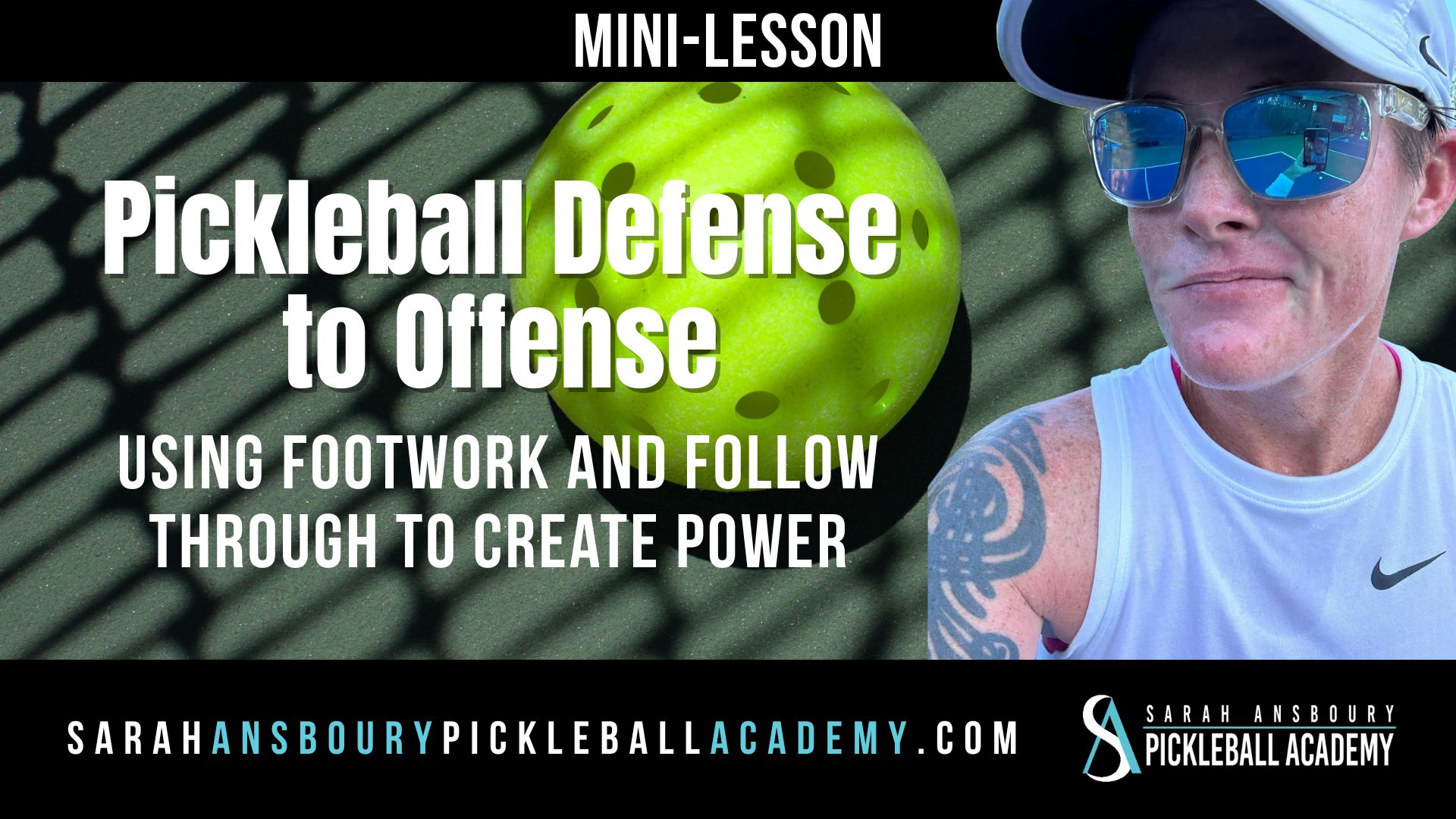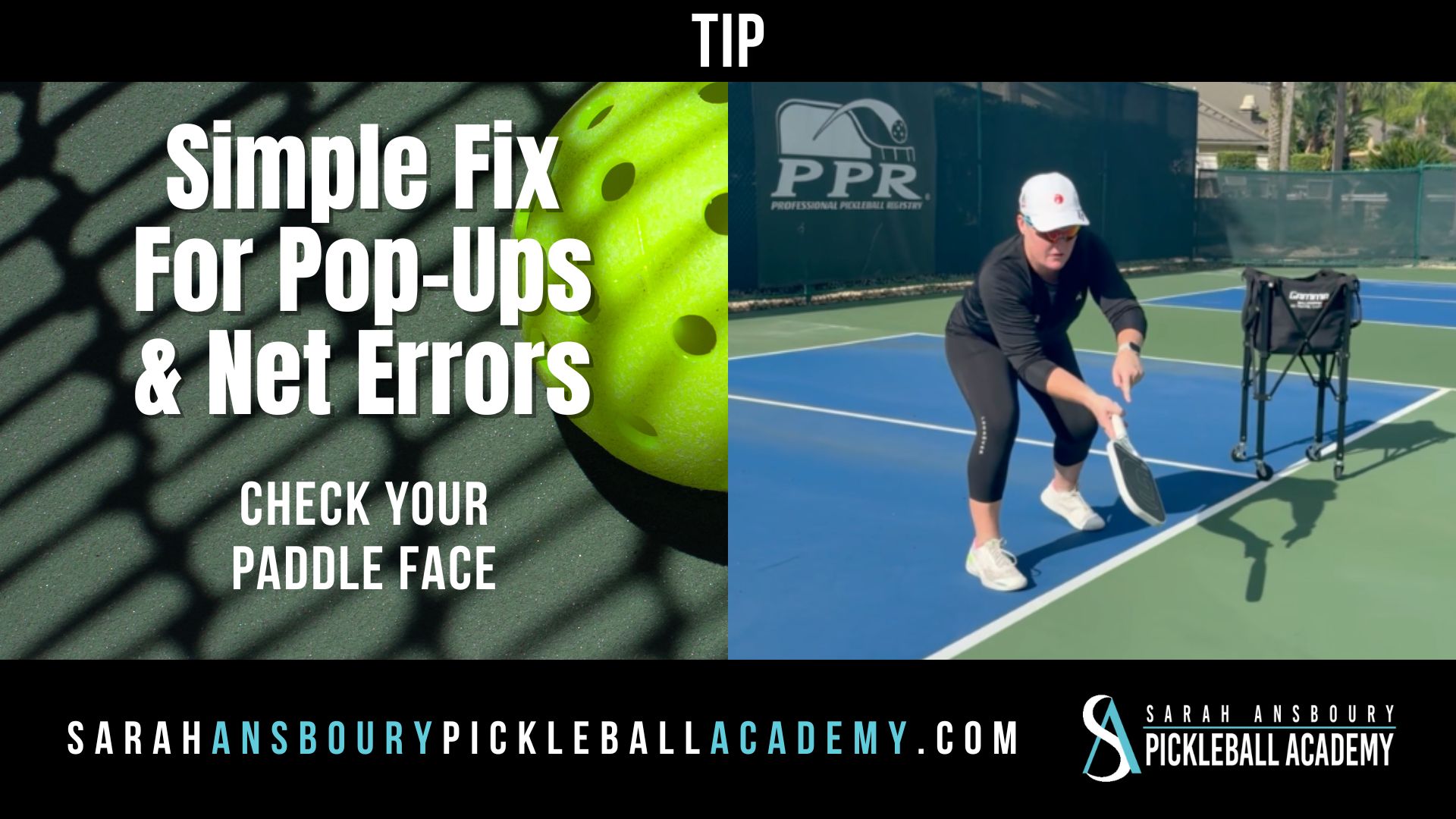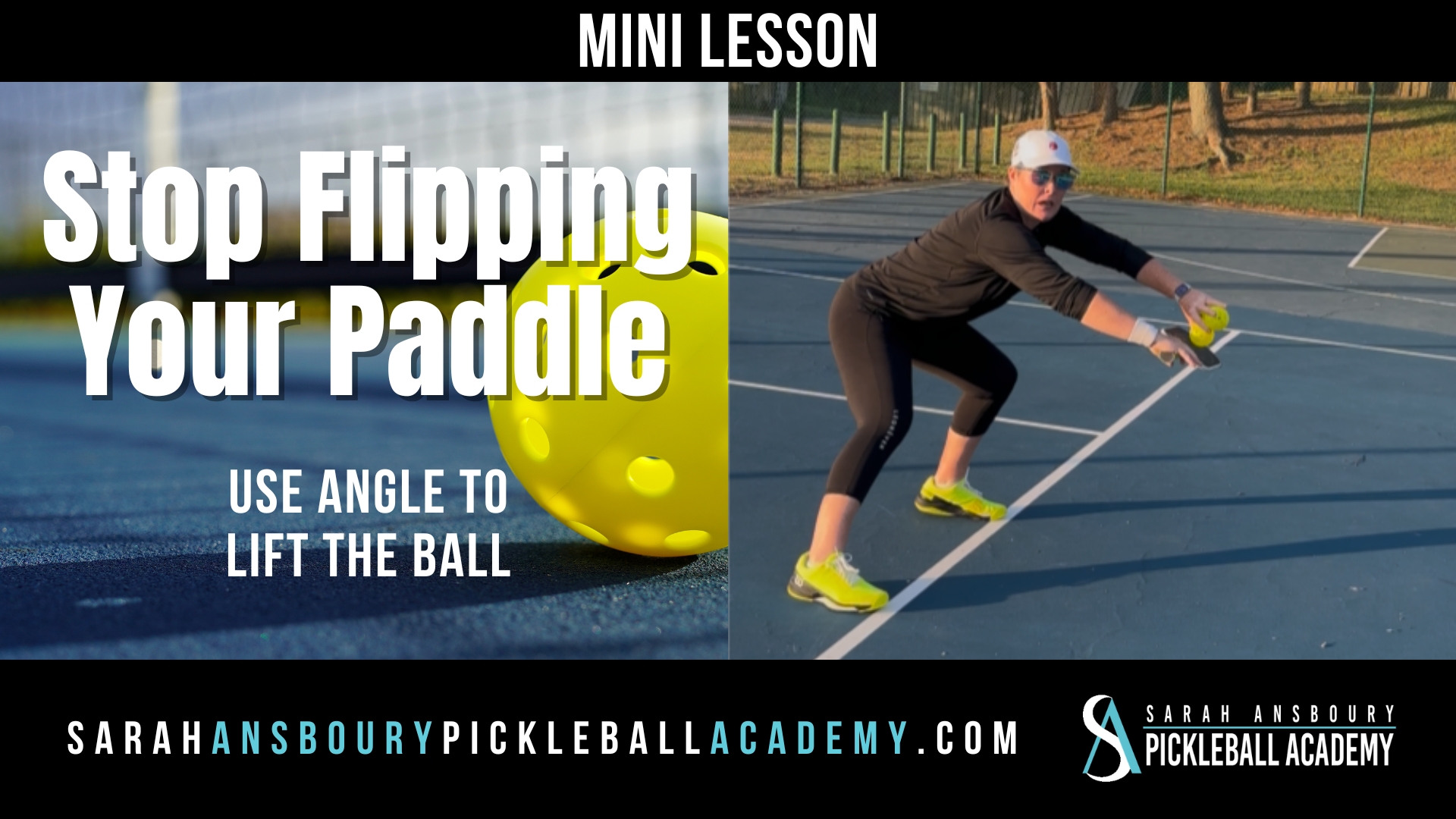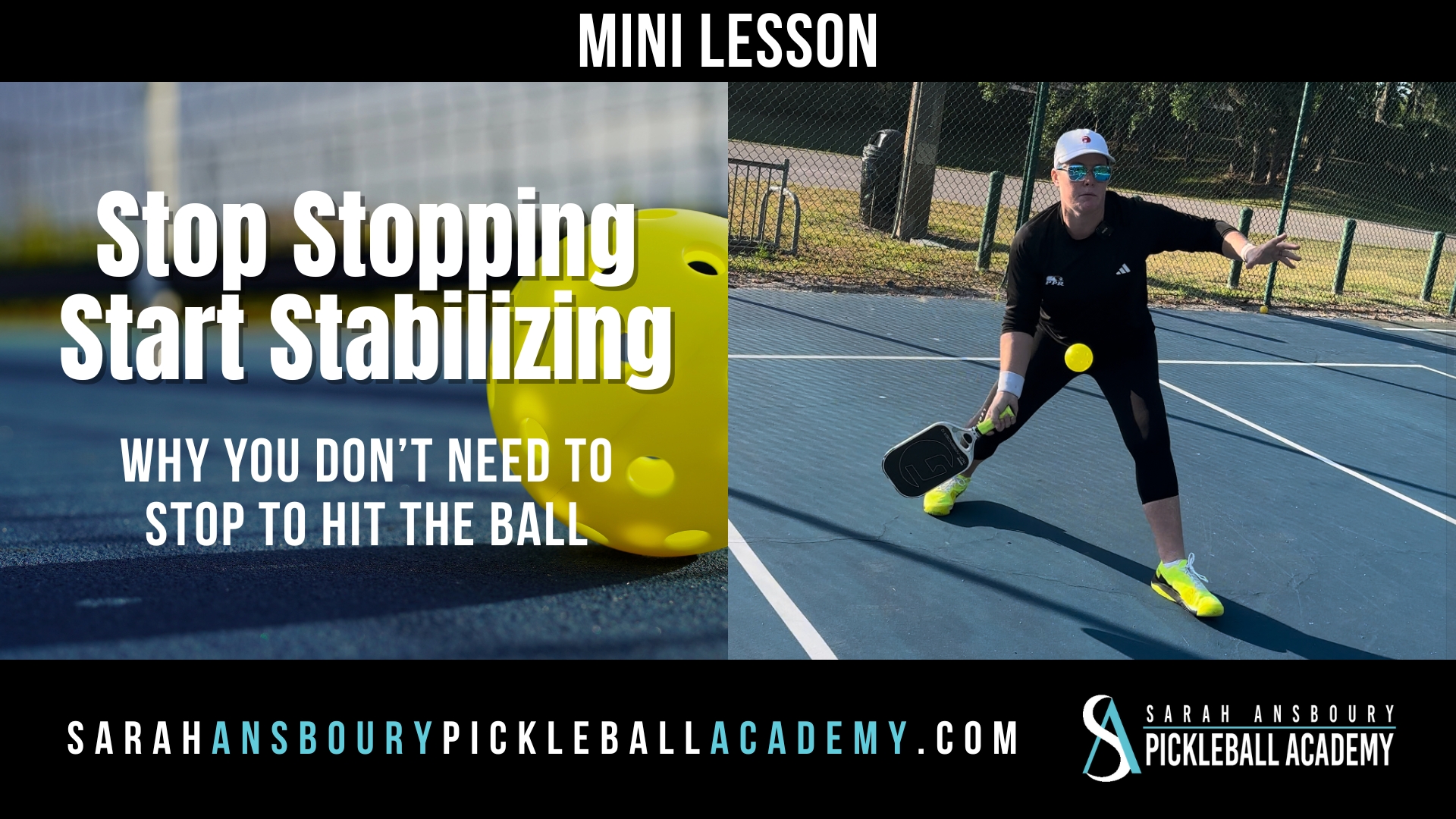We have all had those moments…those “oh no” moments when the ball pops up too high and then crazy things happen. So today, let’s examine 3 keys to keeping the ball low.
3 Keys to Keeping the Ball Low
When you inadvertently hit the ball higher than you intended, I want you to ask yourself three questions:
- What is my grip pressure? During a long rally, it is natural to feel more anxiety as the point wears on. Perhaps you have returned four or five dinks in a row. As the “dink fest” continues you may become obsessed with controlling the ball. Perhaps you forget to breathe which further raises the amount of stress you experience. With this stress comes tension. Next thing you know, you have a death grip on the paddle. You want to grip the paddle with your fingers…there will be a small gap between your palm and the paddle grip. Imagine you want to hold a bird in your hand firmly enough that it won’t fly away but not so tight that you choke it.
- Where did I make contact with the ball, relative to my body? You are more likely to pop the ball up when you make contact too close to your body. During a dink exchange, this often happens when we scoop the ball up near our feet. From that position, or just behind your heel, it is an almost certainty that the ball will fly over the net much higher than you intended. You want to make contact with the ball in front of your body. When you are in your happy neutral position, be certain that your arms are holding the paddle out in front of your sternum. Keep that distance. Imagine a beach ball being held comfortably between your chest and the paddle face. Track the ball with your paddle, and make contact with the ball in front of your body.
- Is your body comfortable, and relaxed? Too often, after we pop up the ball we focus on our paddle. Yes, the paddle face will determine the trajectory of the ball….but your body will determine your paddle position. I want you to think about your body. Are your feet at least shoulder width apart? Are you relaxed with a slight flex in your knees? Are your back, chest, and head up? Are you comfortable and relaxed? Remember, it is just a very light, little yellow balls. It doesn’t take a lot of effort to get it over the net. Focus on your body and how comfortable you feel.
Focus on Maintaining Your Neutral Zone
 Take time to define your neutral zone, as it is within this area that you want to make contact with the ball. (If you need help, watch this video starting at the 1-minute mark.) When you hit a ball in your neutral zone, you should be able to see the entire face of your paddle. I imagine the top tip of my paddle slight angled under the ball. I focus on pushing the paddle forward, not upward. The angle of the paddle will elevate the ball. There is no need to add to it by breaking my wrist, scoping or swinging. A simple push is all that is required.
Take time to define your neutral zone, as it is within this area that you want to make contact with the ball. (If you need help, watch this video starting at the 1-minute mark.) When you hit a ball in your neutral zone, you should be able to see the entire face of your paddle. I imagine the top tip of my paddle slight angled under the ball. I focus on pushing the paddle forward, not upward. The angle of the paddle will elevate the ball. There is no need to add to it by breaking my wrist, scoping or swinging. A simple push is all that is required.
What we always want to remember is that our body does most of the work for us and our paddle is simply the tool we use to keep the ball low. Keeping the ball low requires the correct grip pressure, making contact in front of our body, and maintaining a comfortable/relaxed body position.










